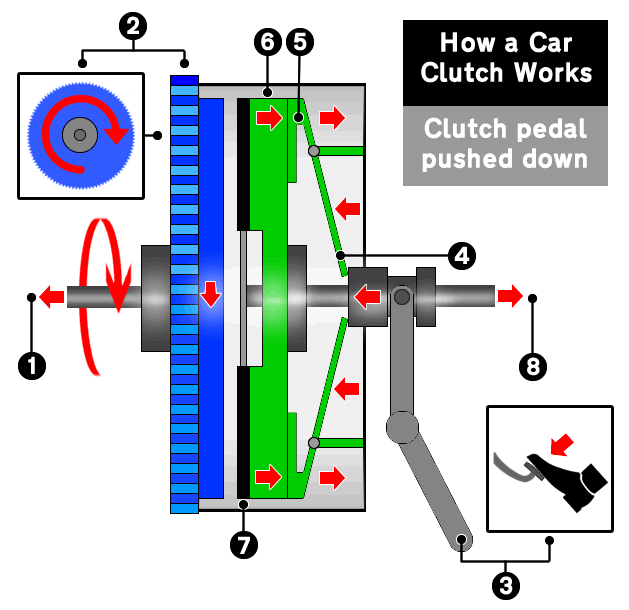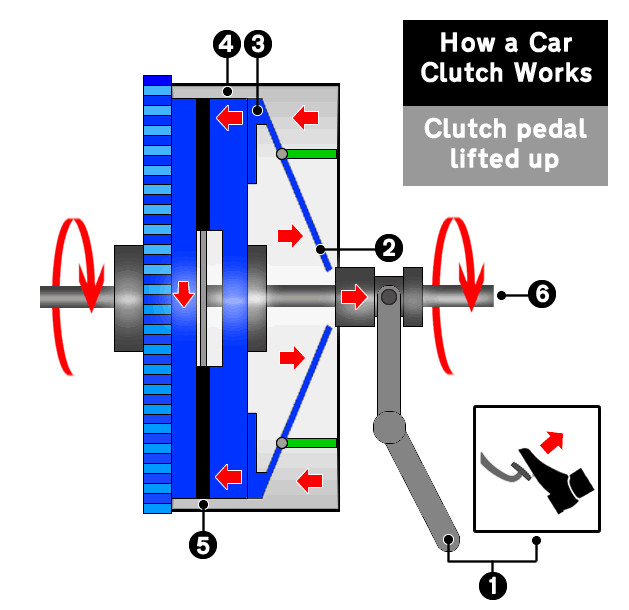How Does a Car Clutch Work
This tutorial explains in simple terms how a car clutch works. Gaining the basics on how a car clutch works, in practice often helps when learning how to use the clutch pedal. Reading this tutorial should help with moving off in a manual car smoothly and help to prevent stalling.
Pushing the Clutch Pedal Down
Let’s start with how a car clutch works and what it does when we push the clutch pedal down. When we push the clutch pedal down, it breaks the connection between the engine and the gearbox. We need to push the clutch pedal down when bringing the car to a stop and for changing gear.

- Rotating shaft comes from the engine.
- The shaft is connected to a flywheel that permanently rotates with the engine shaft.
- The clutch pedal is pushed down.
- The centre of a diaphragm spring is pushed in.
- When the centre of the diaphragm spring is pushed in, the outer edge of the diaphragm spring moves in the opposite direction.
- The diaphragm spring pulls the pressure plate away.
- Making the clutch plate disengage from the rotating flywheel. The clutch plate will no longer rotate with the flywheel.
- The shaft that goes to the gearbox no longer rotates with the engine shaft.
Note or Learner Drivers
When pushing the clutch pedal down, the clutch plate separates from the flywheel which is spinning with the engine, breaking the connection between the engine and the gearbox. You can push the clutch pedal down as quickly as you want to with no adverse effects.
Lifting the Clutch Pedal Up
Now let’s look at how a car clutch works and what it does when we lift the clutch pedal up. When we lift the clutch pedal up, it forms a connection between the engine and the gearbox. We need to lift the clutch pedal up when moving the car off from a stationary position and after changing gears.

- The clutch pedal is lifted up.
- The centre of the diaphragm spring is released to its normal position.
- This reaction causes the outer edge of the diaphragm spring to push against the pressure plate.
- The pressure plate pushes against the clutch plate.
- The clutch plate pushes against the flywheel which is spinning with the engine and will begin spinning at the same rate as the flywheel.
- The shaft from the engine and the shaft going to the gearbox are now joined together and both begin spinning.
Note or Learner Drivers
As we can see in the diagram, lifting the clutch pedal up means that the clutch plate which isn’t rotating pushes up against the flywheel which is rotating with the engine.
When moving off from a stationary position in 1st gear, the car has no momentum. Momentum is generated as the clutch plate begins to rotate with the flywheel. If you lift the clutch pedal up too quickly, either the wheels will spin, or in most cases what happens, is that the engine will stall.
Because a car weighs so much, momentum has to be generated gradually, so it’s important that when moving off from a stationary position, the clutch pedal is lifted up slowly.